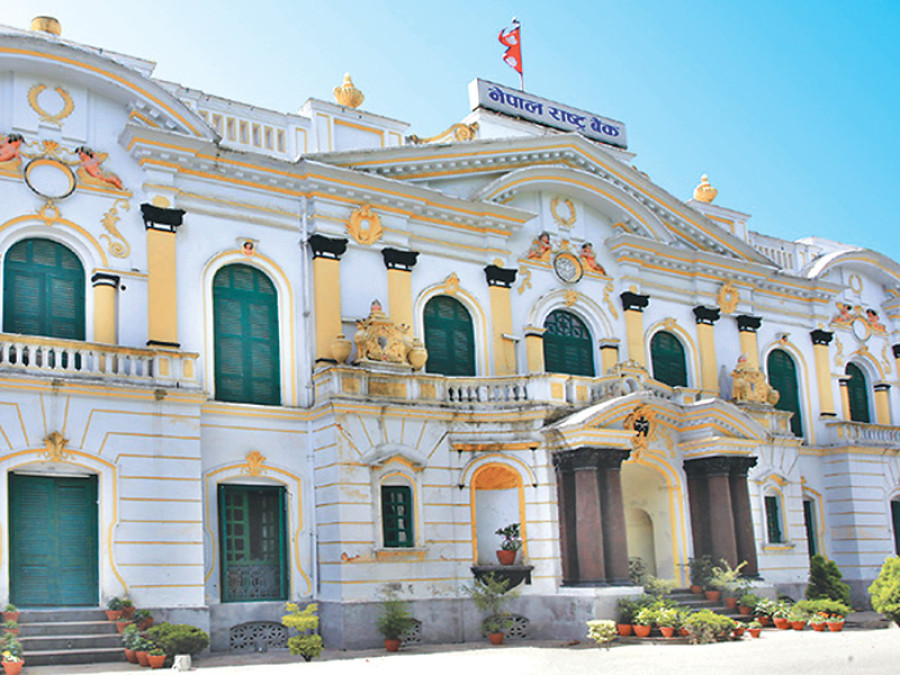Columns
Nepal Rastra Bank’s autonomy restored
There is room for the Ministry of Finance to act like a big brother should it choose—wrongly—to do so.
Paban Raj Pandey
The Supreme Court on Tuesday reinstated Maha Prasad Adhikari as governor of Nepal Rastra Bank, telling the government not to implement its decision to suspend him. Adhikari was automatically suspended on April 7 after the government formed a three-member inquiry committee to look into allegations of him leaking sensitive information to the media and of non-cooperation to the government, among others. The committee was given a month to submit its report. Section 22 of the Nepal Rastra Bank Act 2002 makes it clear that the government will not deprive the accused of a reasonable opportunity to defend himself or herself before removing him or her from office.
On April 17, Adhikari moved the Supreme Court, demanding that Finance Minister Janardan Sharma’s decision to form a probe committee be scrapped. Adhikari was suspended right after completing two years of his five-year tenure. He assumed office on April 7, 2020 during the KP Oli administration. Oli, who tried to dissolve Parliament twice between December 2020 and May 2021, was essentially shown the door in July 2021 by the Supreme Court, which also asked that Sher Bahadur Deuba be appointed as prime minister. Under Deuba’s five-party coalition government, Sharma got the Ministry of Finance portfolio under the quota of the Communist Party of Nepal (Maoist Centre). Adhikari is considered close to Oli.
Adhikari scapegoated
Sharma is not known for his deep grasp of the economy. To his credit, he also took reins when times were tough. Back then, the economy was still smarting under Covid-19 woes. Then in February this year came the Russian invasion of Ukraine, which poured more gasoline into inflation, which was already trending higher. Sharma is a politician, not a technocrat. As would any politician, he would like to do well in the next election—for himself and his party. For a party in power, the primary focus is growth. No matter what. On the other hand, central bankers are wired differently, as they shoot for maximum employment but with a keen focus on price stability. They are the adults in the room.
Those in the know are aware that the two—Adhikari and Sharma—were not on the best of terms. Tensions flared when the monetary policy for the current fiscal year 2021-2022, unveiled last August, limited equity investors to borrow only Rs40 million from one bank and a combined Rs120 million from multiple vendors. This was done—rightly—with a goal of controlling wayward growth in margin debt. The NEPSE as a result sold off. No finance minister would want to see a lower stock market during his tenure. Fast forward to this year when rapidly falling foreign exchange reserves in the face of surging imports and lower remittances forced Nepal Rastra Bank to stop the import of luxury items.
The economy is weak and could weaken more in the quarters ahead. In January, Adhikari the central banker said it would be a challenge to meet the government’s goal of 7 percent growth in the economy this fiscal year, even as Sharma the politician was sticking to the target. The latter was being unrealistically optimistic. Local elections are next month and provincial elections later this year. By nature, politicians would like to take credit when things are going well and shift the blame when they are not. In all probability, Adhikari was being scapegoated. In his petition to the apex court, he alleges that Sharma was unhappy with his decision to freeze Rs400 million sent from the United States to one Prithvi Bahadur Shah.
Globally, there are examples of confrontations between central banks and the executive branch. In the early 1990s, US President George Bush blamed Federal Reserve Chairman Alan Greenspan for his defeat in the 1992 election by not cutting rates. President Donald Trump, leading up to the 2020 election, openly criticised Chairman Jerome Powell for not adopting a more accommodative monetary policy. In March 2013, Bank of Japan Governor Masaaki Shirakawa, refusing to yield to Prime Minister Shinzo Abe’s pressure to ease, left three weeks before his term ended. Raghuram Rajan, the Reserve Bank of India governor between September 2013 and September 2016, was similarly refused a second term.
Suspensions defeated
In Nepal, there have been examples of executive encroachment in the past. Tilak Rawal and Bijaya Nath Bhattarai were suspended but later reinstated by the Supreme Court. Once again, the court has risen to the occasion. The act ensures autonomy to the central bank, but it also leaves room for executive interference.
The act states that (1) The objectives of the bank are: (a) To formulate, and manage, monetary and foreign exchange policy needed to maintain price and balance of payments stability in order to assist in sustainable development of the economy and to maintain fiscal stability; (b) To raise public confidence towards the banking and financial system by making the sectors stable and by increasing access to financial services; (c) To develop a secure, healthy and efficient payment system. (2) The bank, without adversely impacting the objectives outlined in subsection 1, will extend cooperation to the government of Nepal in the implementation of economic policy.
Subsection 2 above can create a situation in which monetary policy is expected to assist fiscal policy. The way the board of directors is set up also creates room for interference; the board consists of the governor, the finance secretary, two deputy governors, and three members appointed by the government of Nepal from among Nepalis renowned in the fields of economics, money, banking, finance, commerce, management, and commercial law. The finance minister also chairs a three-member recommendation committee to recommend to the government three names for the governor’s appointment.
In other words, there is room for the Ministry of Finance to act like a big brother should it choose—wrongly—to do so. Then there is this. The 2016 second amendment to the act added section 106 C, which states that (1) The government of Nepal may give directives to the bank as relates to currency, banking, and finance and that (2) It will be the bank’s duty to abide by those. This is a huge red flag and needs to be amended. Else, Adhikari will not be the last one to get suspended. This will occur again. This needs to stop.




 15.12°C Kathmandu
15.12°C Kathmandu















